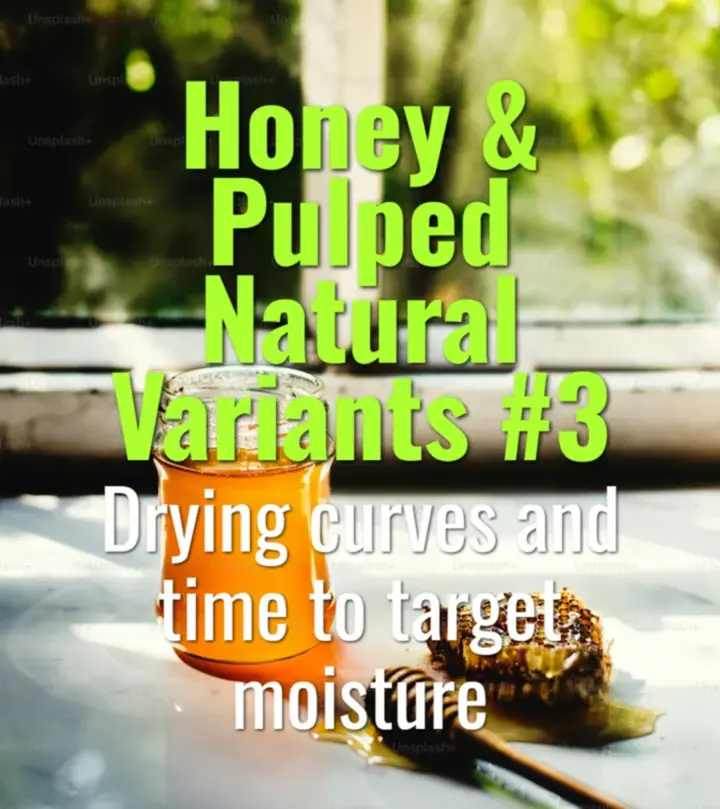Drying curves and time to target moisture
This topic explains drying curves in honey and pulped natural processes, how time to reach target moisture is managed, and why controlled drying is essential for flavor and stability.
- Coffee Basics Nerds
- 2 min read
Article 3 of 12 in Honey & Pulped Natural Variants/

Role of Drying in Honey & Pulped Naturals
- After pulping, beans retain mucilage which slows drying.
- Drying curves track moisture decline over time, showing how processing choices affect speed, flavor, and risk.
Typical Drying Times
- White/Yellow honey: 7–12 days.
- Red honey: 12–18 days.
- Black honey: 18–25 days, sometimes longer under shade.
- Times vary with climate, altitude, and infrastructure.
Drying Curves Explained
- Steady, gradual decline in moisture is ideal.
- Too rapid drying: Case hardening (outer layers dry, inner bean stays wet).
- Too slow drying: Risk of mold, over-fermentation, or uneven lots.
Key Variables Affecting Drying
- Mucilage Percentage: More mucilage = slower drying.
- Layer Thickness: Thin layers (3–5 cm) promote even drying.
- Climate: Humidity, sun exposure, and wind affect rate.
- Turning Frequency: Frequent turning accelerates uniform drying.
- Infrastructure: Shade nets, solar dryers, or raised beds help control pace.
Target Moisture and Stability
- Final target: 10–12% moisture for safe storage.
- Water activity target: 0.55–0.65 to prevent microbial growth.
- Monitoring with moisture meters ensures precise endpoint.
Quality Impacts
- Controlled drying: Enhances sweetness, clarity, and complexity.
- Inconsistent drying: Leads to uneven flavor, storage defects, or market rejection.
Challenges
- Requires constant labor during peak harvest.
- Weather instability complicates drying schedules.
- Black honey especially vulnerable to defects if poorly managed.
Lasting Importance
Drying curves and time to target moisture are central to honey and pulped natural success. By carefully managing drying rates, producers preserve desired flavor profiles, reduce defects, and ensure shelf-stable, specialty-grade coffee.
You might also like:
- Tags:
- Lasting Importance
- Water Activity
- Specialty Grade
- Raised Beds
- Flavor Profiles
- Sweetness Clarity
- Desired Flavor
- Challenges Requires
- Solar Dryers
- Black Honey
- Microbial Growth
- White Yellow
- Risk Mold
- Moisture Meters
- Pulped Natural
- Turning Frequency
- Quality Impacts
- Target Moisture
- Frequent Turning
- Grade Coffee
- Slow Drying
- Honey Pulped
- Red Honey
- Safe Storage
- Yellow Honey
- Shade Nets
- Enhances Sweetness
- Key Variables
- Drying Leads
- Poorly Managed
- Shelf Stable
- Slows Drying
- Leads Uneven
- Uniform Drying
- Sun Exposure